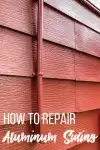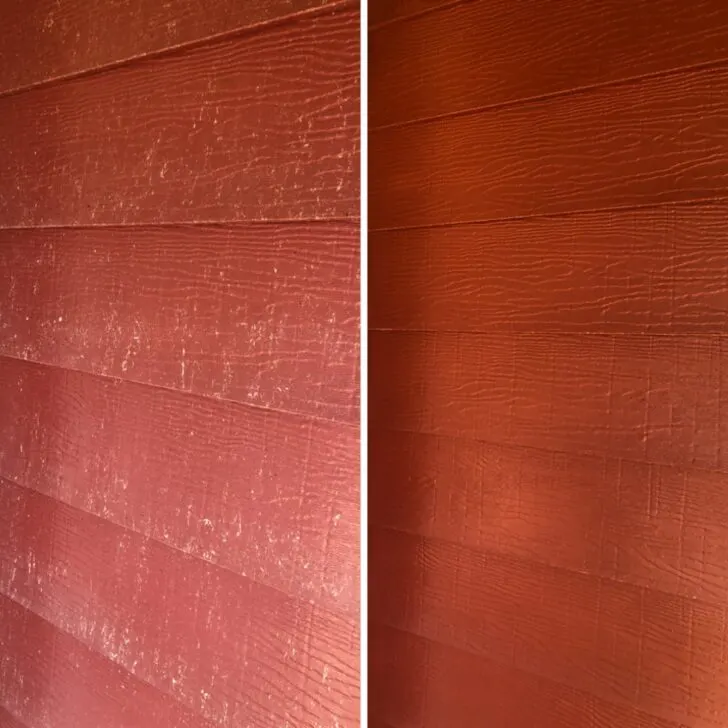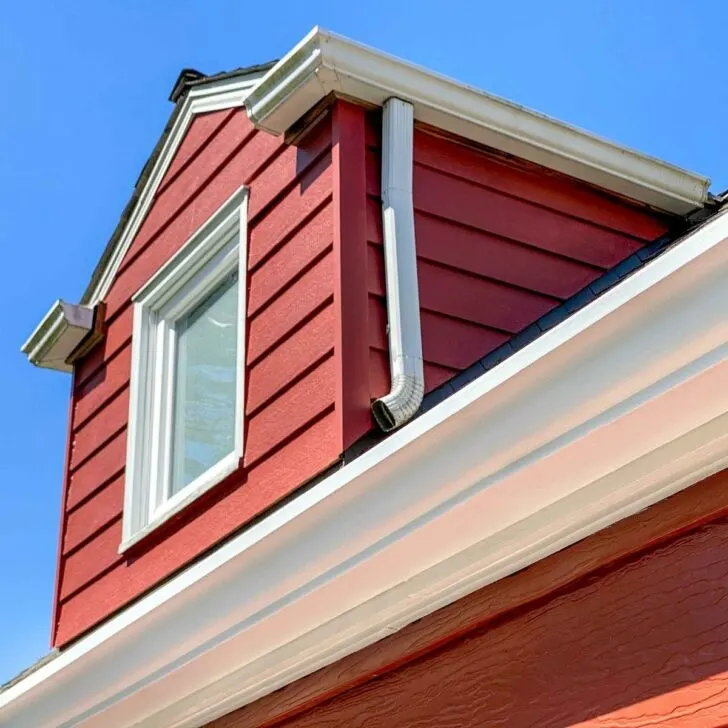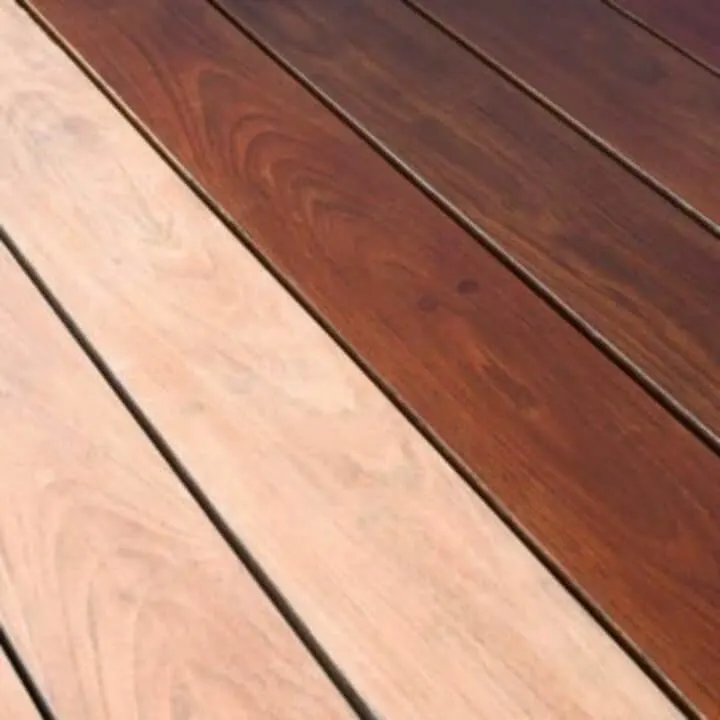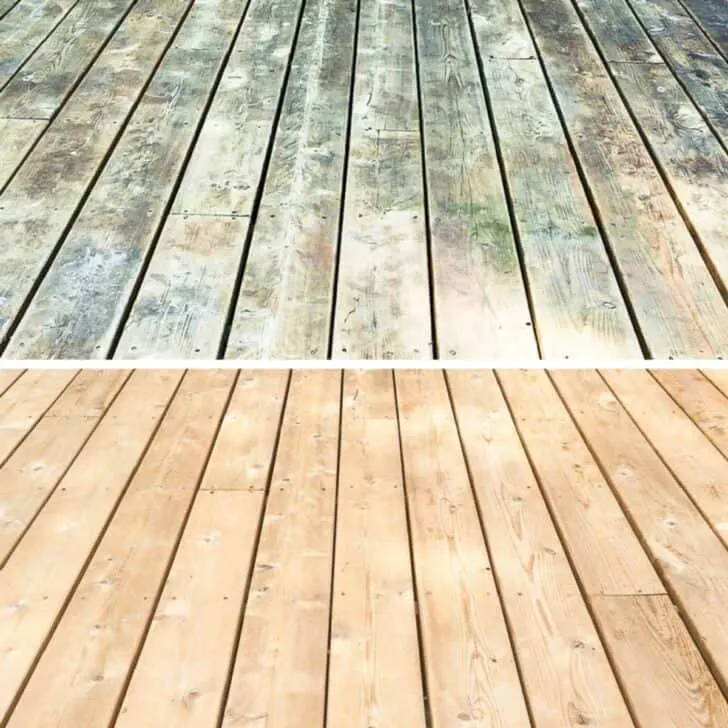Learn how to repair aluminum siding and patch holes both big and small! This step by step tutorial will show you how to fix holes in aluminum siding easily!
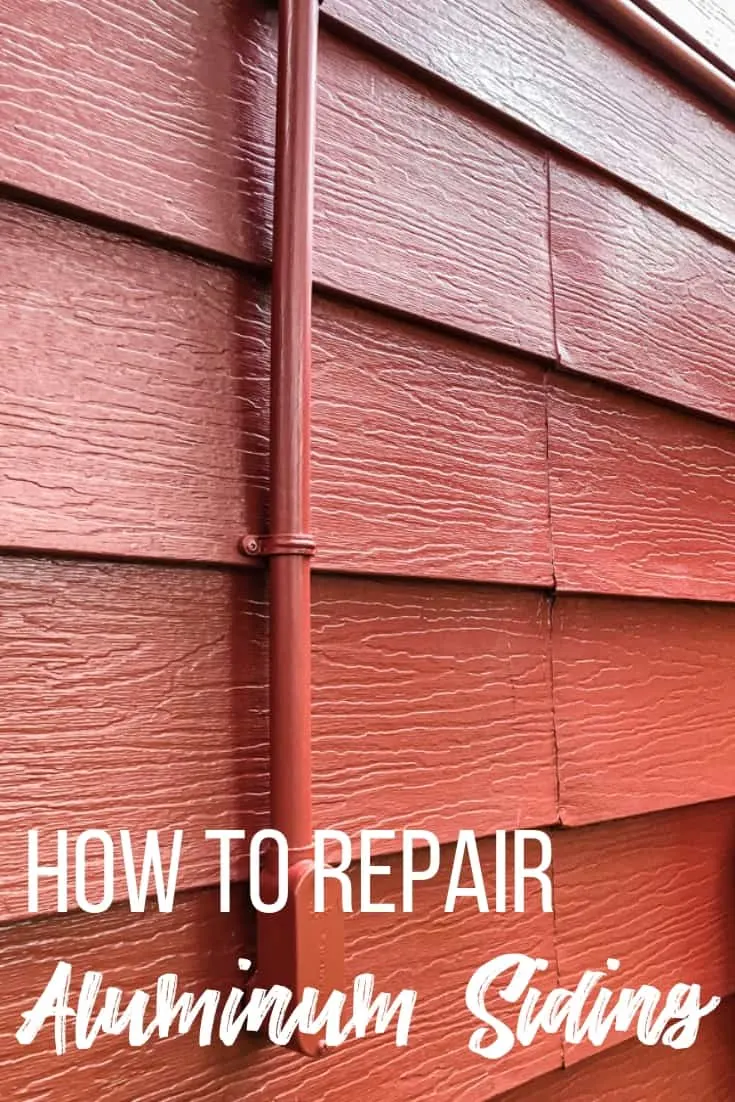
After moving the electric meter to a new location, we were left with a big hole in our aluminum siding. A temporary patch was put in place and the whole thing was forgotten about for years. Today, I'm showing you how to repair aluminum siding and fix holes both big and small!
This post contains affiliate links for your convenience. Purchases made through these links may earn me a small commission at no additional cost to you. Please visit my disclosures page for more information.
This eyesore on the back of the house has been bothering me for ages, but it always got pushed down the to-do list. Now that I'm giving the backyard a makeover, it's time to fix it up!
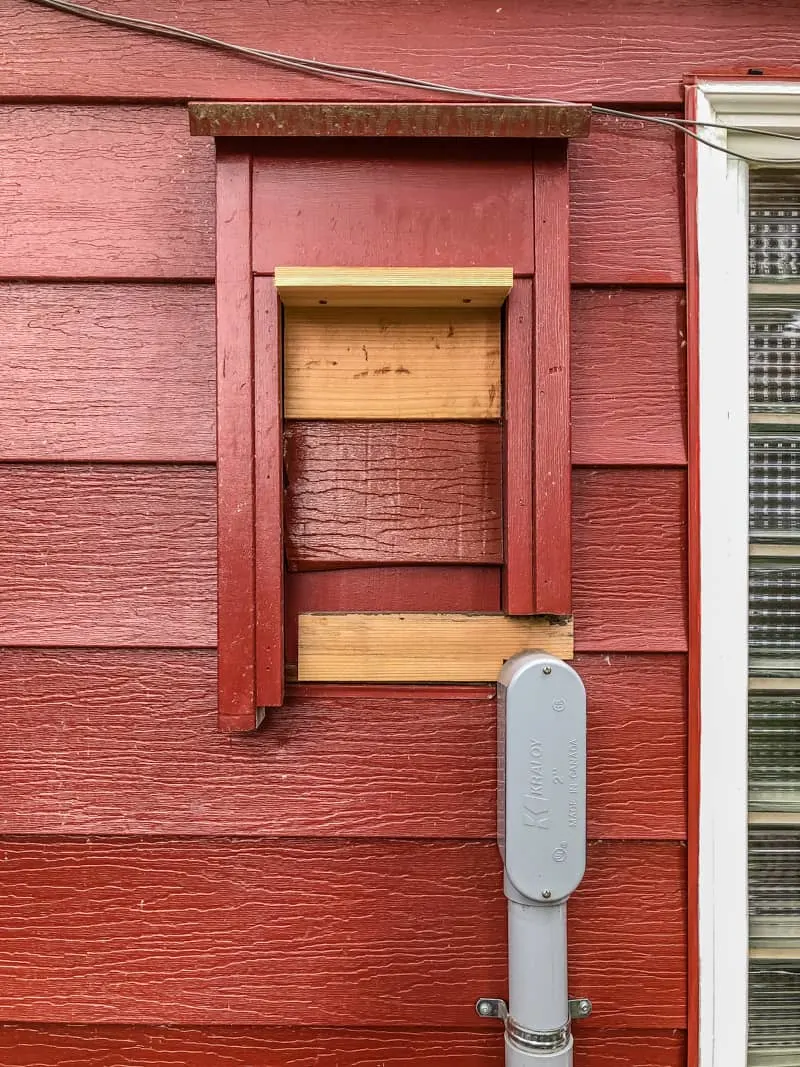
Materials Needed to Repair Aluminum Siding
- Electric metal shears
- Metal snips
- Scrap aluminum siding
- We saved the siding that was removed when we turned a window into a sliding glass door for our new deck. If you don't have extra and can't find an exact match, try taking a piece from the back of a shed or garage, then replace it with something visually similar in the inconspicuous location.
- Waterproof repair tape
- This stuff is amazing! It forms a watertight bond that can be used to seal up gaps and holes in aluminum siding.
- Gutter sealant
- Used to seal up seams and gaps in cut edges of aluminum siding.
- Aluminum repair epoxy
- Perfect for filling smaller holes from screws, nails or bolts.
- Latex gloves for working with sealant and epoxy.
- Cut resistant work gloves for handling sharp edges of aluminum.
Don't forget your safety gear! Here are my recommendations for safety glasses and ear protection.
How to Patch Aluminum Siding
Cut away the damaged area
First, I ripped down everything covering the hole and removed the weird frame with a crowbar.
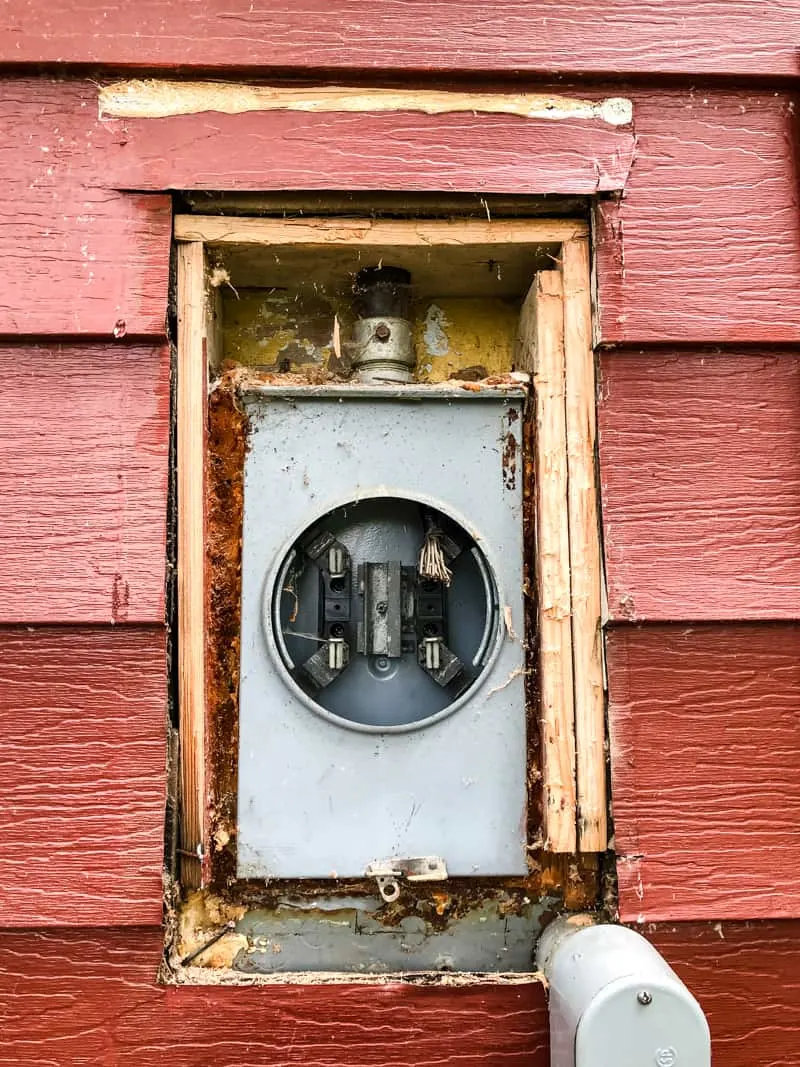
It looks pretty scary, but I'm relieved there weren't any creepy-crawly things or water damage inside. I used an oscillating multi-tool like this one to cut the framing back to be level with the surrounding walls, then attached a ¼" plywood backing with brad nails.
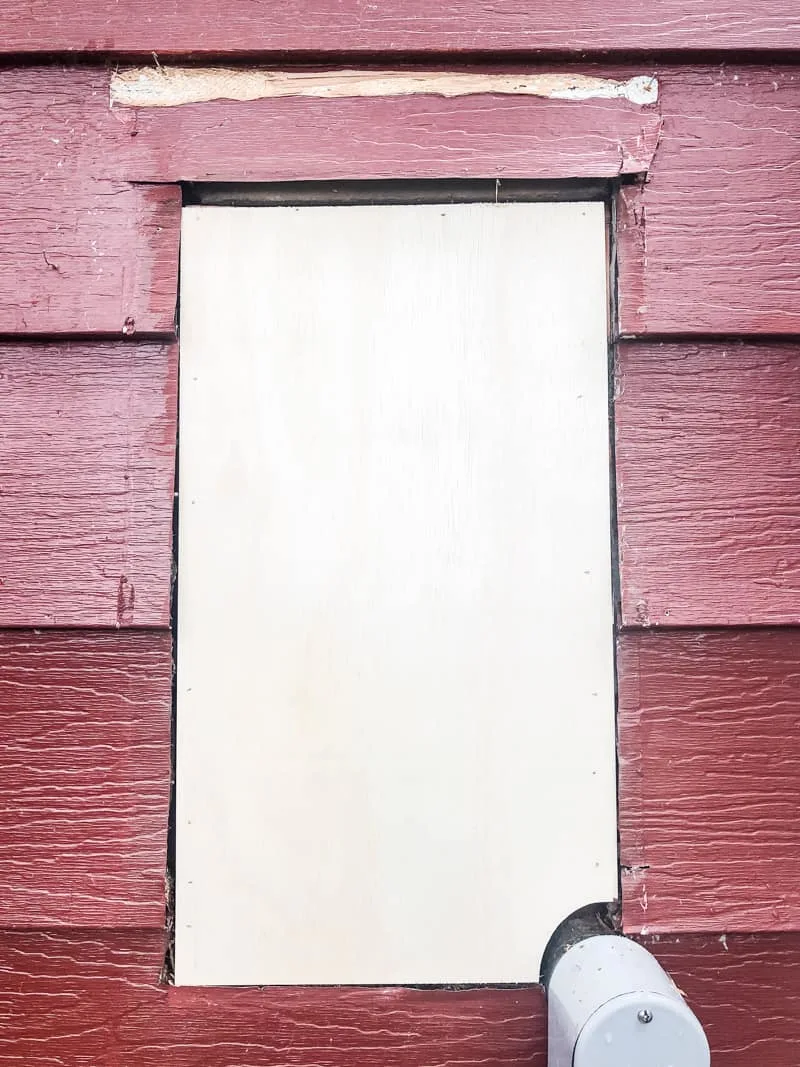
Apply waterproof repair tape to edges
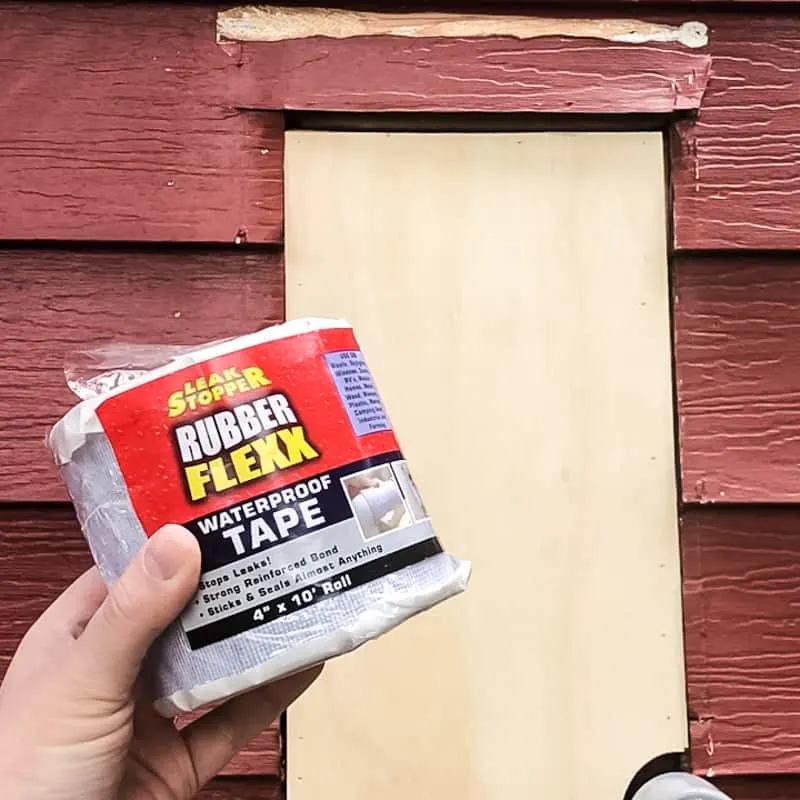
I wanted to cover up those gaps for extra insurance against moisture or insects. This stuff bonds to aluminum and other surfaces for a water tight seal, while still allowing for expansion and contraction as the temperature changes.
I applied the tape around the entire hole, overlapping it with the intact siding an inch or two. This had the added benefit of holding down the edges of the existing siding that had curled up slightly over time.
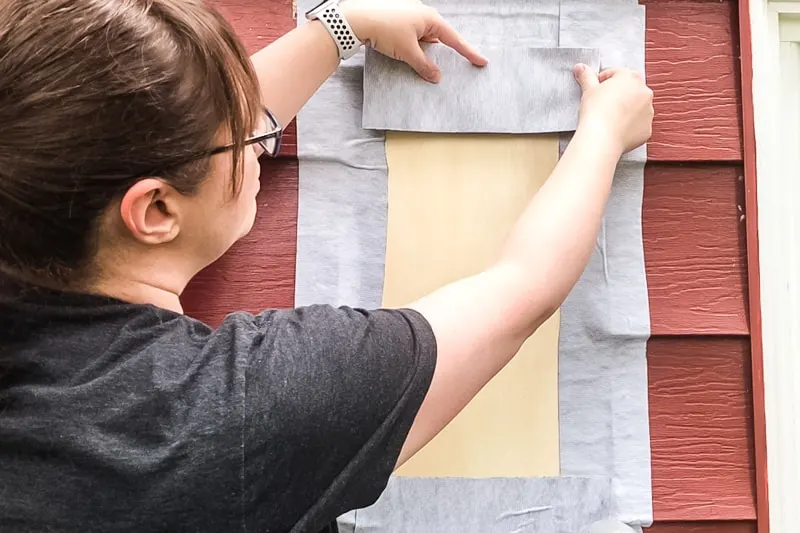
Cut off the flange from the bottom strip of siding
Try as I might, I just couldn't get the interlocking flanges at the bottom of the existing siding to come apart. I even got one of these siding removal tools to pop them loose, but it wouldn't budge!
So instead, I cut off the bottom flange from the first strip of siding. Electric metal shears make this process soooo much easier than hand shears!
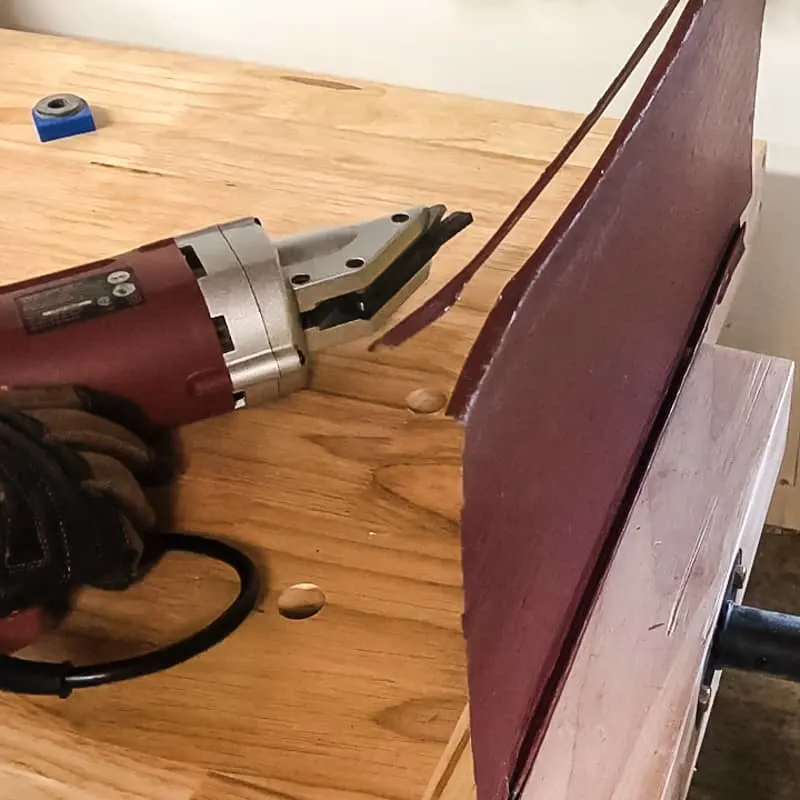
I traced the shape of the conduit onto the back and cut it out with the same shears. I also cut away the nailing strip on the top where it will overlap with the existing siding.
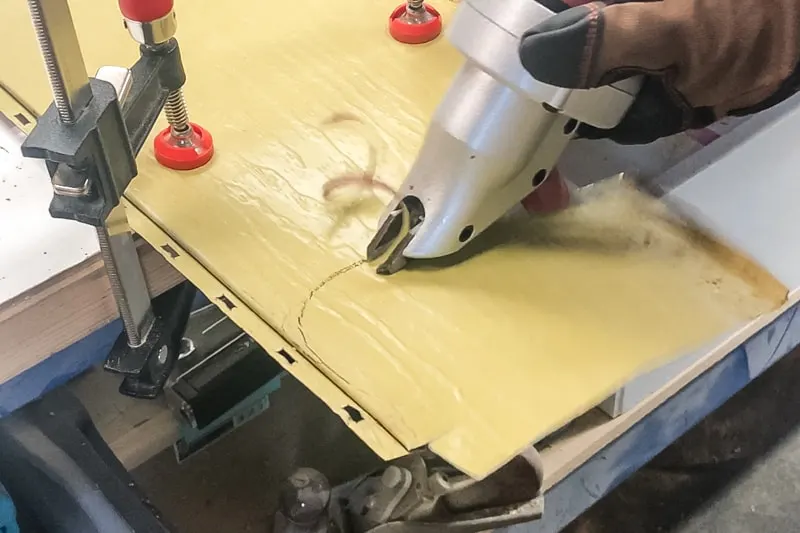
It took a few trips back and forth to the shop to get the fit right, but it finally slid into place!
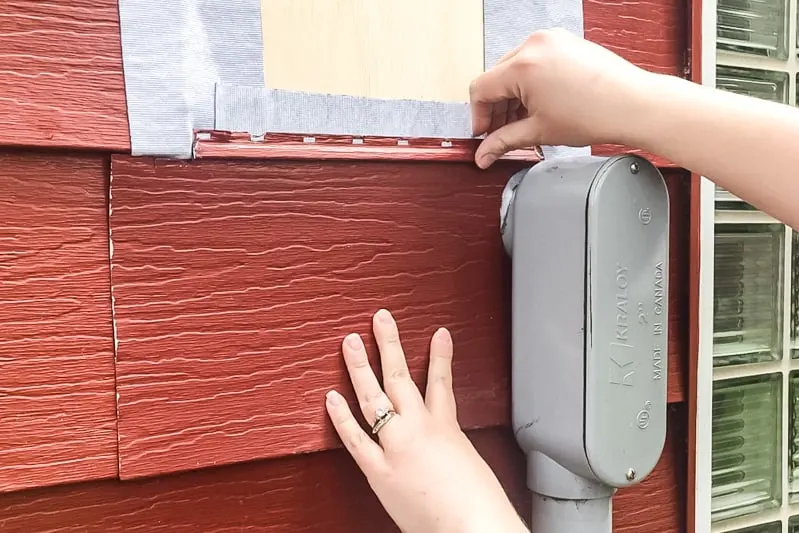
Apply Gutter Sealant to Back Edges
The old siding wasn't in the best shape after getting ripped off the wall, so there are a few dents along the edges. I used gutter sealant like a glue to hold the edges of the patch to the existing siding.
Put on latex gloves first, because you don't want this stuff on your skin! Run a bead of sealant along all the cut edges except the nailing strip at the top.
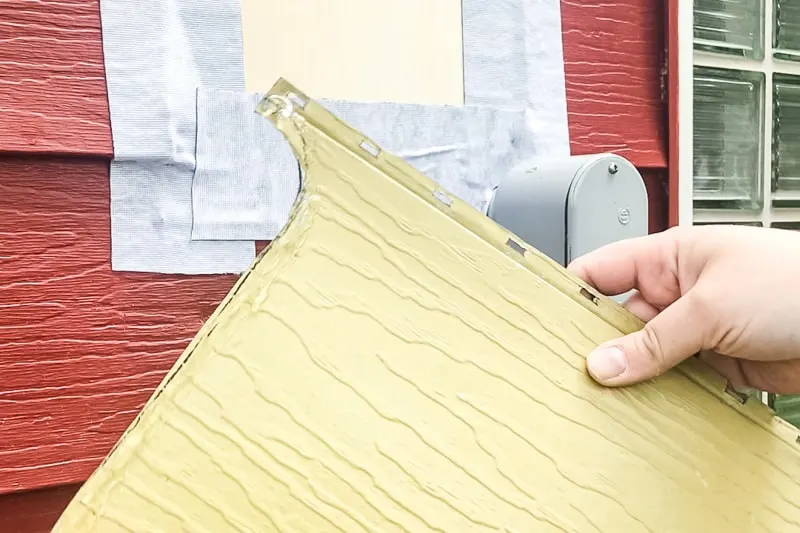
Then press the siding piece in place. Once it holds in place on its own, drive nails through the nailing strip and into the backing. The siding should hang on the nails slightly so that it can expand and contract with the weather (metal expands in the heat!)
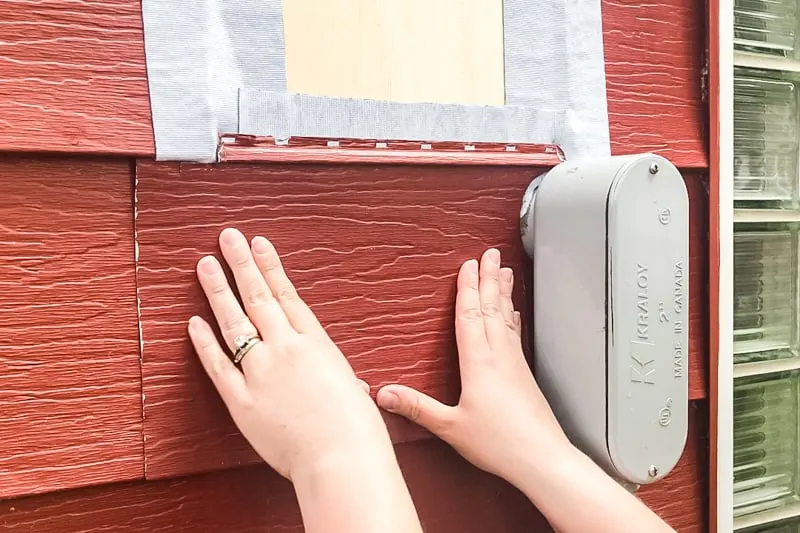
Work your way up the wall
The next few pieces only needed notches cut out on the ends so it could slide under the existing siding. I was getting into a groove at this point and forgot to take photos of the notches. Oops!
Once you get to the top, cut off the nailing strip the same way you cut off the bottom flange. Try to make this cut as close to the edge of the strip as possible so it lines up with the underside of the existing siding.
Seal all edges with gutter sealant or silicone
To prevent insects from working their way under the siding, I sealed all the edges with more gutter sealant. It might have been overkill, but I'd rather have to deal with touching up paint than a hive of bees in the walls!
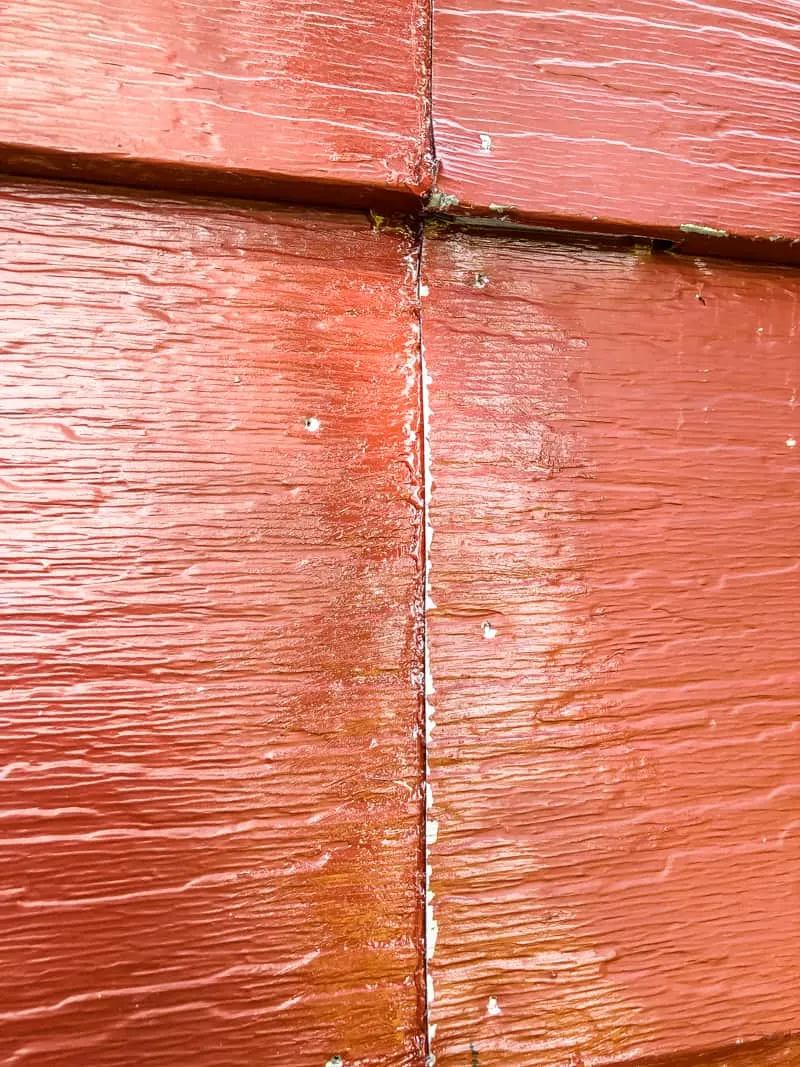
Make sure your sealant says it allows for seasonal movement, or you'll get buckling in the summer when the metal expands!
Fill smaller holes with aluminum repair epoxy
While I was at it, I decided to remove the old hose holder from the wall in this area. I'll be moving my potting bench to that spot, which already has a hose reel on the side.
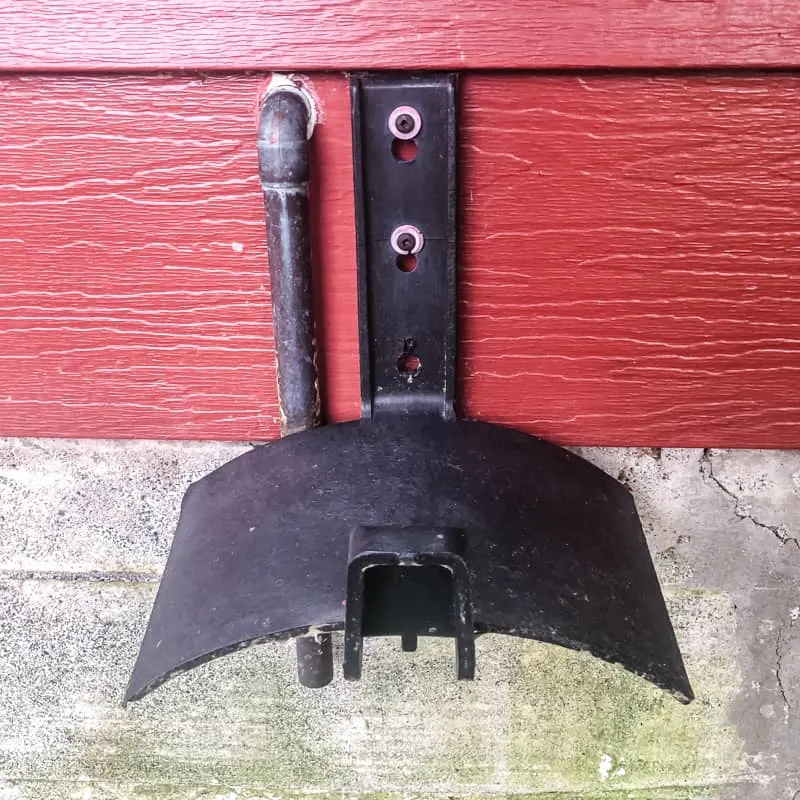
After unscrewing it from the siding, I was left with a few smaller holes in the aluminum siding to patch up.
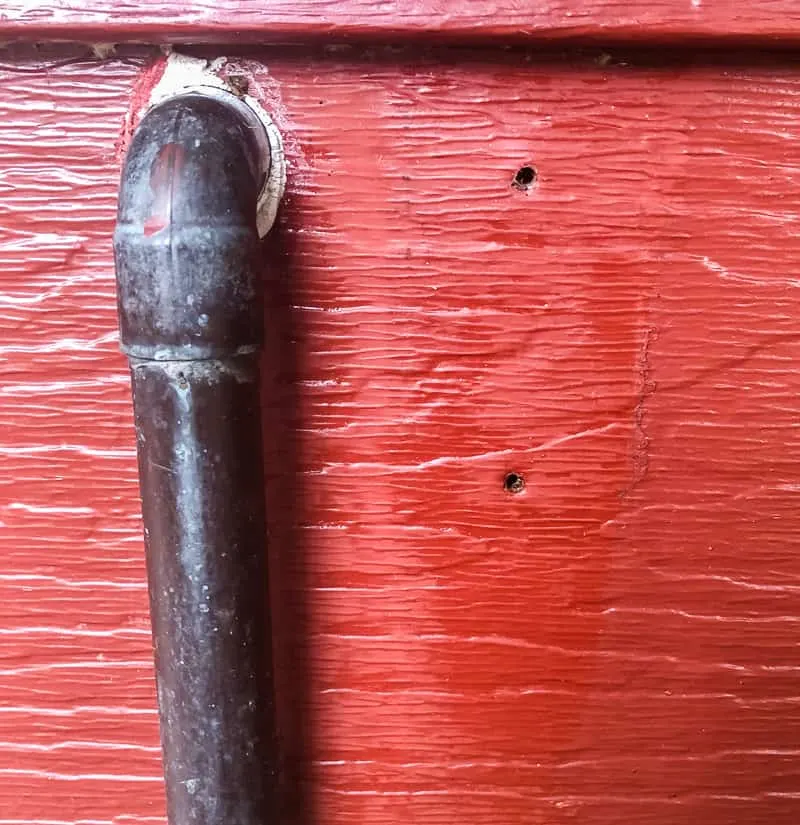
Don your latex gloves again, then pull off a small chunk of aluminum repair epoxy from the tube. Mix the two components together thoroughly, then push the putty into the hole with your fingertip.
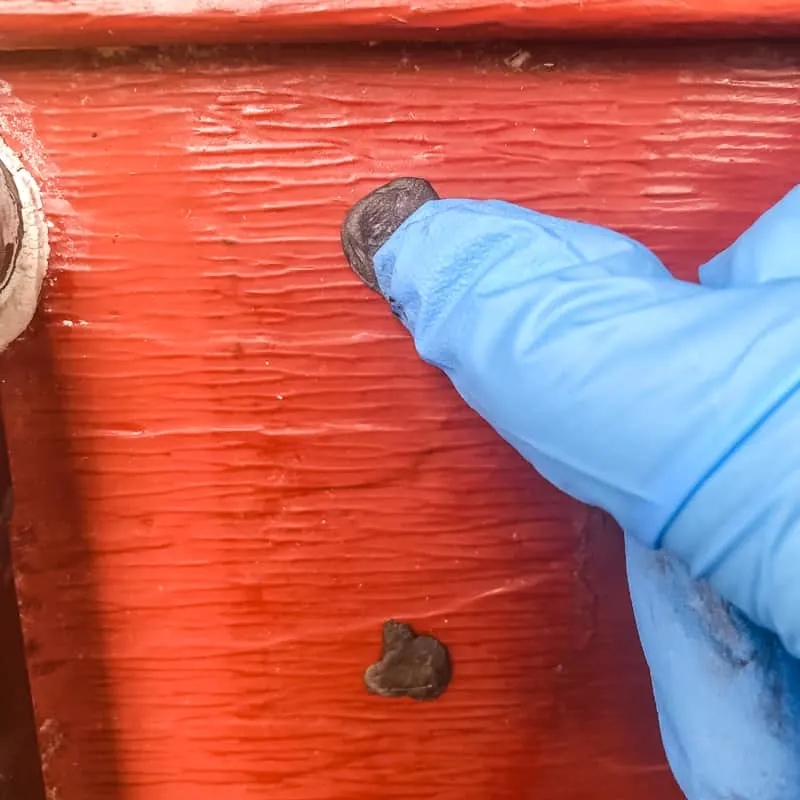
Peel off any excess so the patch is flush with the front of the aluminum siding. Work fast, because this stuff sets up quick!
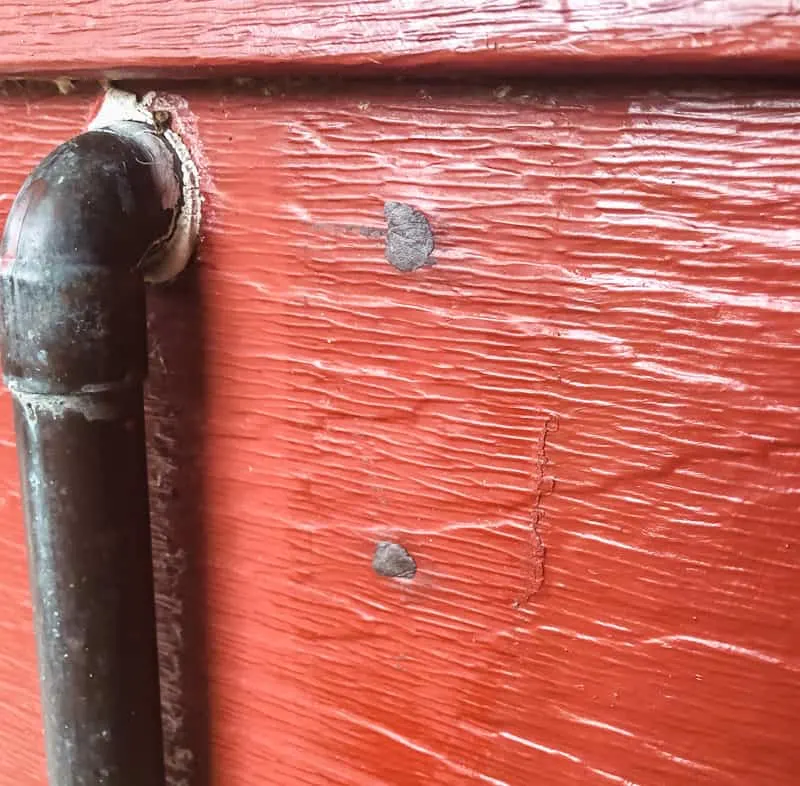
Touch up paint
Once the sealant and epoxy cures (check the label for cure times), you can touch up the paint in the repaired areas. If you don't have any house paint, bring a small piece of the replacement siding to the paint store to be color matched.
I cleaned the aluminum siding in this area first, then painted the repaired section and the gray conduit so it all blends into the original siding. While it's certainly not perfect, it's better than the before!
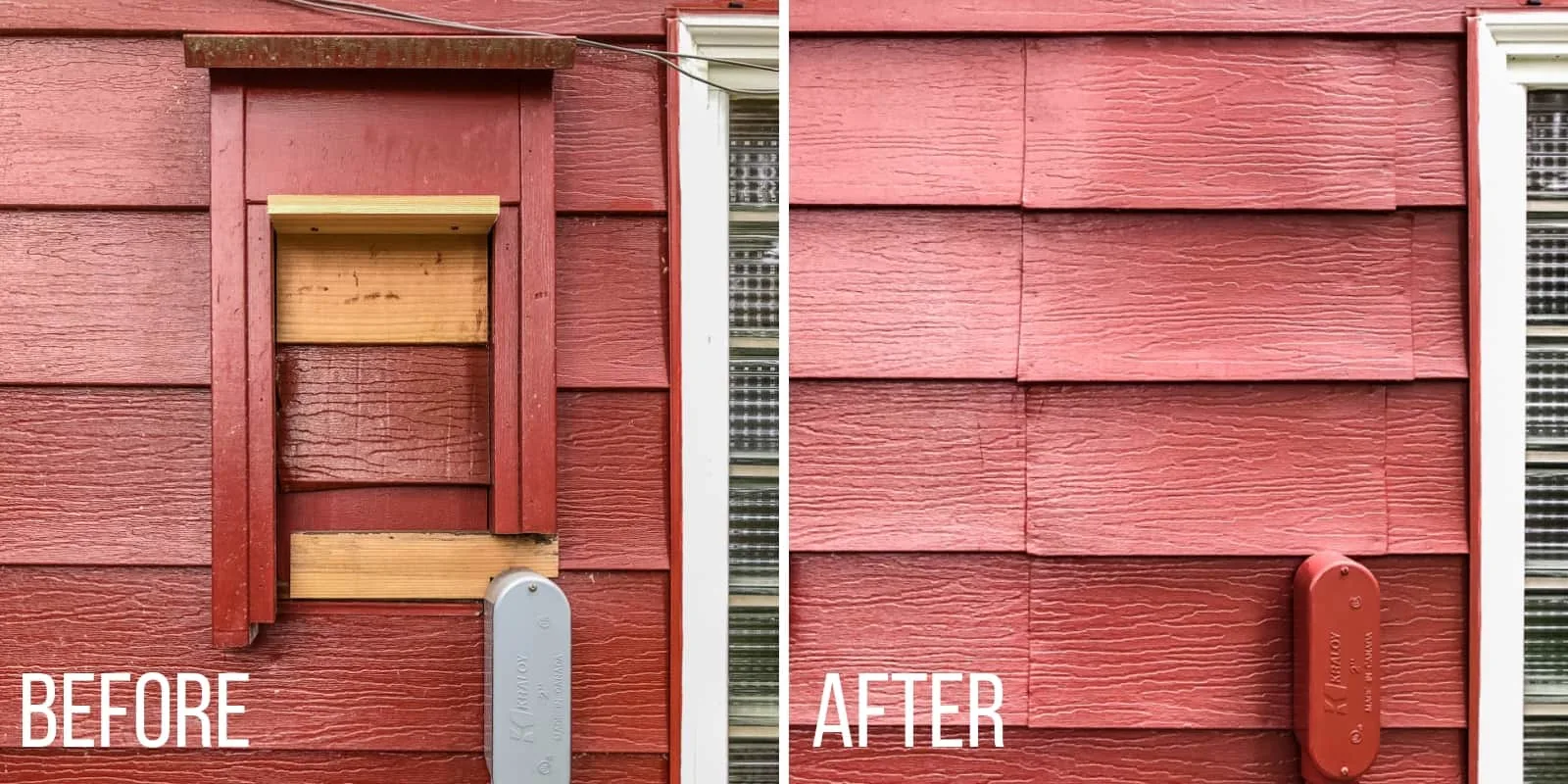
The repaired area is still obvious because all the seams line up. I'll be hiding this wall behind a vertical planter, so it won't be seen. If your area to be repaired is in a high visibility spot, I suggest staggering the seam lines or lining them up with a window or door.
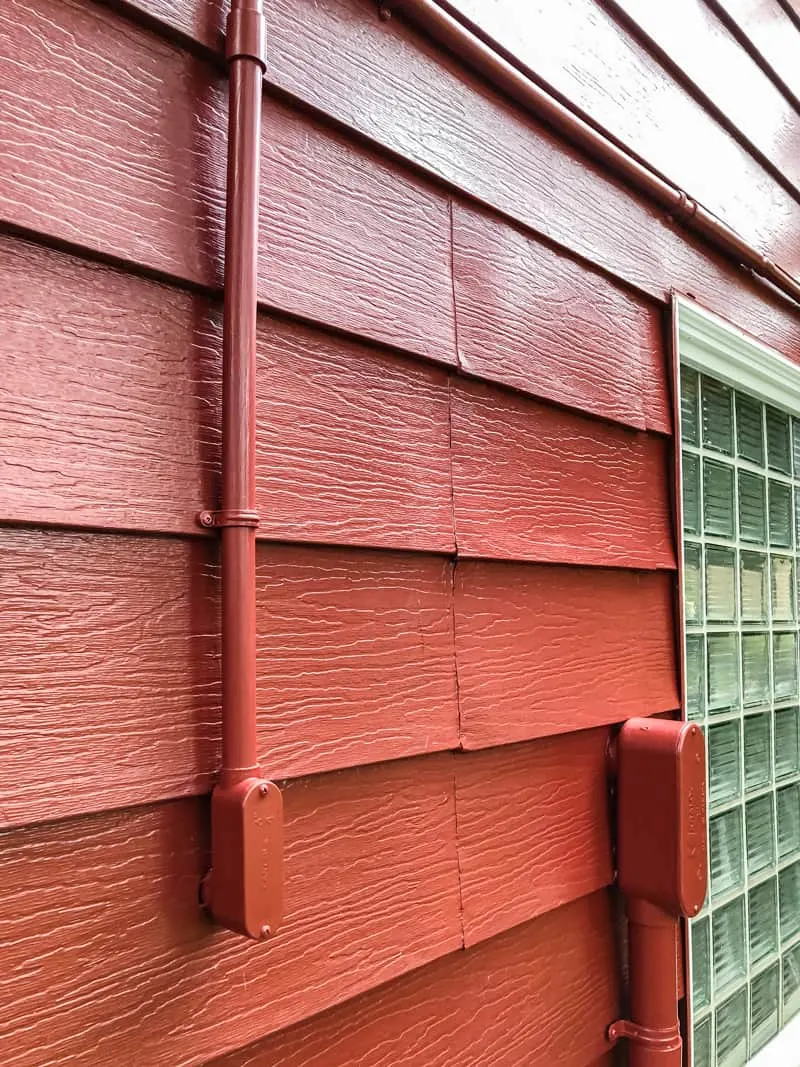
A professional siding installer has the tools to cut aluminum siding without that bump on the ends, but I'm no professional! 😉 I'm just relieved to finally have this aluminum siding repair complete! Now I can rest easy knowing that our home is watertight and not being invaded by insects!
Check out these other home improvement projects!

